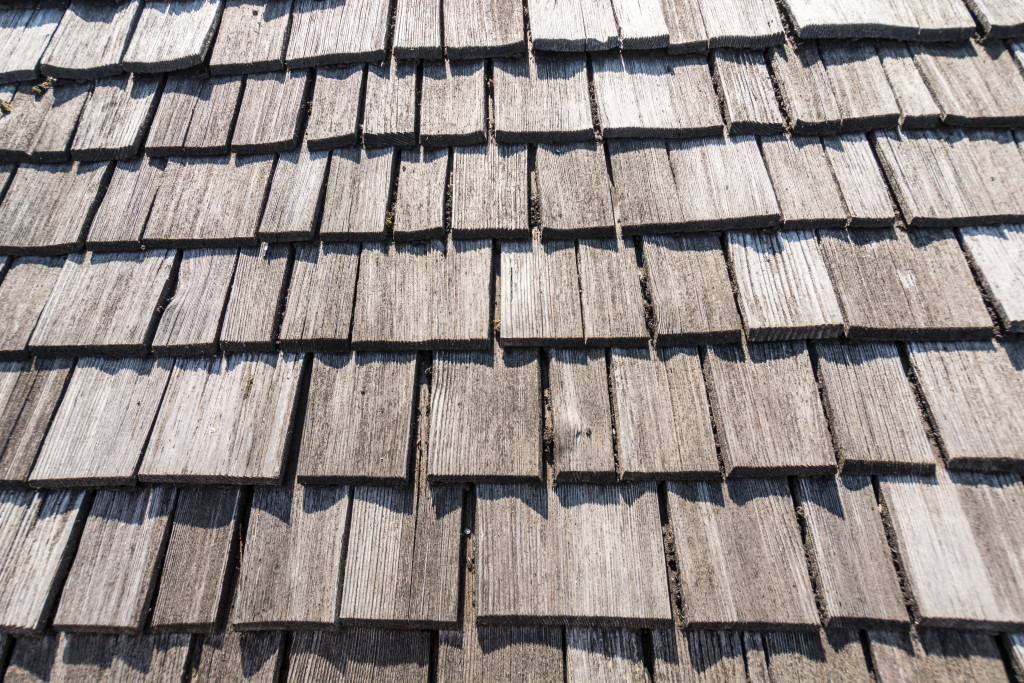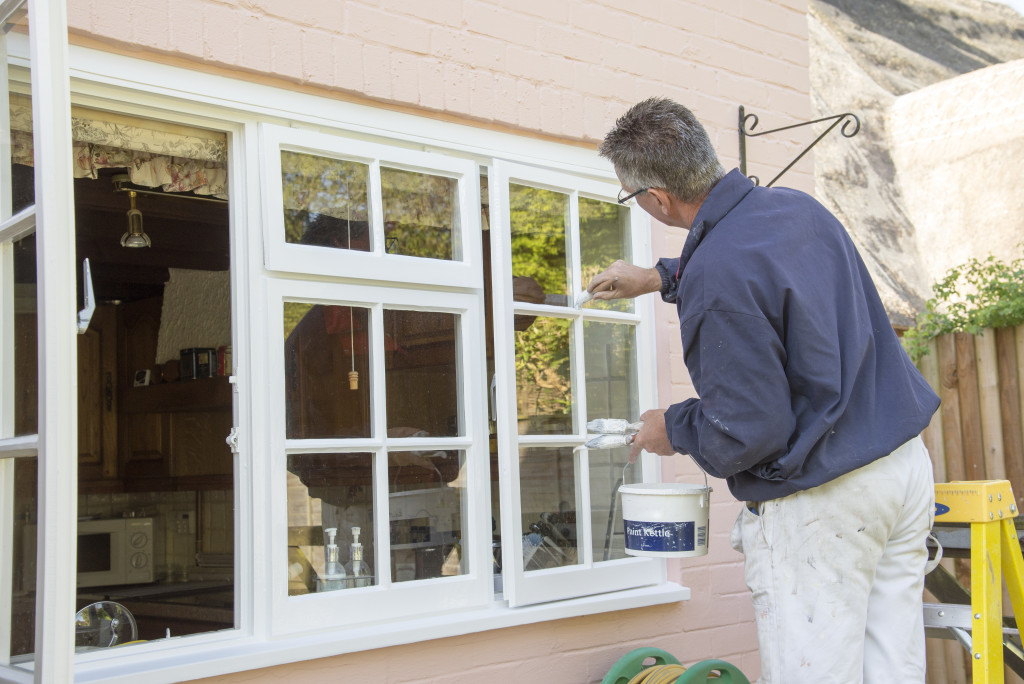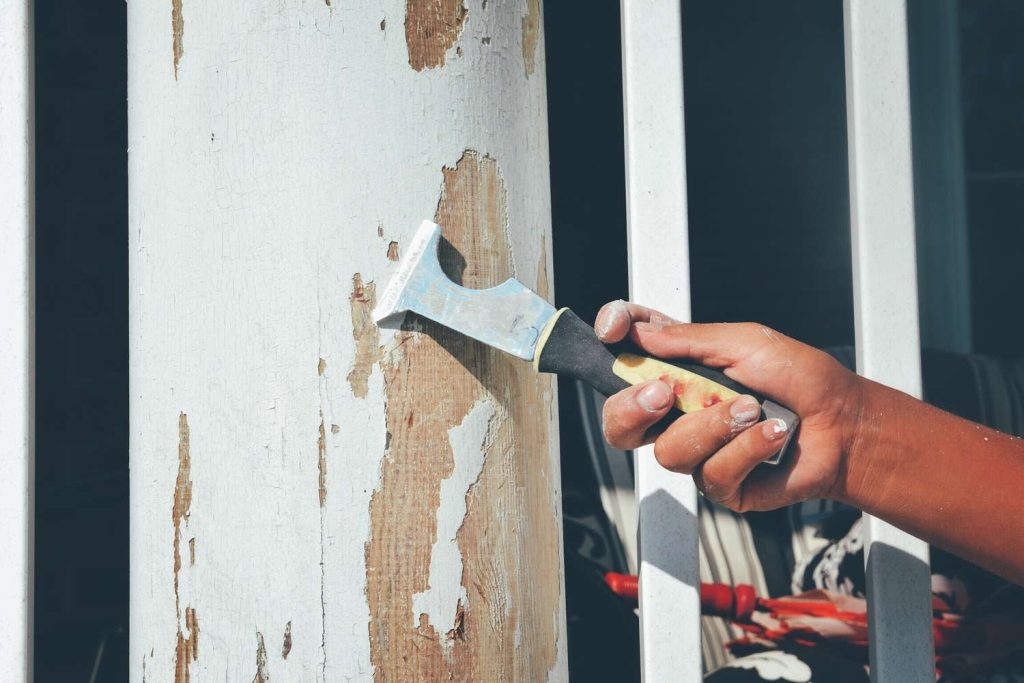- Damage to roofing materials and moisture can both cause exterior paint to peel.
- Sun damage, poor quality paint or application, and insect/pest activity can also lead to peeling paint.
- Proper surface preparation ensures that your exterior paint will stand up to the elements and last for years.
- Protect your exterior paint using high-quality paint, regular maintenance, and a protective coating.
- Pay attention to the weather and take steps to protect your paint from extreme temperatures, heavy rain, and high winds.
As a homeowner, you have probably experienced the frustration of peeling exterior paint at some point. Not only does it ruin the look of your home, but it can also be a sign of underlying problems.
Fortunately, understanding the causes of peeling paint and taking proactive steps can help you address the issue before it worsens. This blog post will explore the possible causes of peeling exterior paint and provide some tips on what to do to fix them.
Damaged Roofing

One of the most common causes of peeling exterior paint is damage to your roofing materials. Damaged roofing can leak water through the material and onto the walls, causing the paint to peel off as it gets wet. To prevent this from happening, you should have your roof inspected regularly by a professional.
However, make sure to consult someone who specializes in the kind of roofing you have. For instance, if you have asphalt roofing, you should be looking for asphalt roofing services. They can inspect the material and identify any damage before it causes too much of an issue.
Moisture
One of the primary culprits of peeling exterior paint is moisture, mainly if the paint job is done without proper surface preparation. Water can penetrate the paint’s surface and create a layer of air between the color and the wall, forming bubbles and, eventually, peeling.
Other sources of moisture can include leaks, high humidity, and water damage. The best way to prevent this is to invest in proper surface preparation before painting and promptly address any water-related issues.
Sun damage
The harsh UV rays from the sun can cause exterior paint to fade, crack, and peel over time. This is especially common in areas that receive a lot of direct sunlight. To prevent sun damage, choose high-quality paint specifically formulated to withstand UV rays, and consider applying a protective coating to your exterior paint.
Poor quality paint or application
Sometimes, peeling paint is simply the result of poor quality paint or inadequate application. Poor-quality paint can crack or peel over time, while flawed application can create gaps and bubbles that lead to peeling. Avoid these issues by investing in high-quality paints and hiring professionals to ensure proper application.
Insects and pests
Believe it or not, insects and pests can also be a cause of peeling exterior paint. Woodpeckers, for example, can damage siding and create holes that allow moisture to seep in. Carpenter ants and termites can also cause damage to the wood, leading to peeling paint. To address this issue, it’s essential to inspect your home regularly for any signs of pest activity and address problems as soon as they arise.
Tips for Protecting Your Exterior Paint
To keep your exterior paint looking its best, it’s essential to take proactive steps to protect it. Here are some tips for keeping your color in good condition and preventing peeling:
Use High-Quality Paint

One of the most effective ways to protect your exterior paint is to use high-quality paint. High-quality paint is more durable and will last longer than cheaper options. While it may be tempting to save money by buying more inexpensive paint, it’s important to remember that you get what you pay for.
Perform Regular Maintenance
Another important tip for protecting your exterior paint is to perform regular maintenance. This involves inspecting your exterior paint for any signs of damage, such as peeling, cracking, or chipping. If you notice any damage, it’s essential to take care of it immediately to prevent further damage.
Consider Adding a Protective Coating
If you want to take your paint protection to the next level, consider adding a protective coating. Protective coatings are designed to provide extra protection to your exterior paint. They can help to prevent damage from UV rays, moisture, and other environmental factors.
Pay Attention to the Weather
It’s essential to pay attention to the weather when protecting your exterior paint. Extreme temperatures, heavy rain, and high winds can all cause damage to your paint. If inclement weather is on the way, take steps to protect your paint.
Final Thoughts
Peeling exterior paint can be a major headache for homeowners, but it’s not uncommon. Understanding the possible causes of peeling paint and taking proactive steps to address them can help keep your home looking great and prevent more serious issues from developing. Investing in proper surface preparation, high-quality paints, and professional application ensures that your exterior paint will stand up to the elements and last for years.
